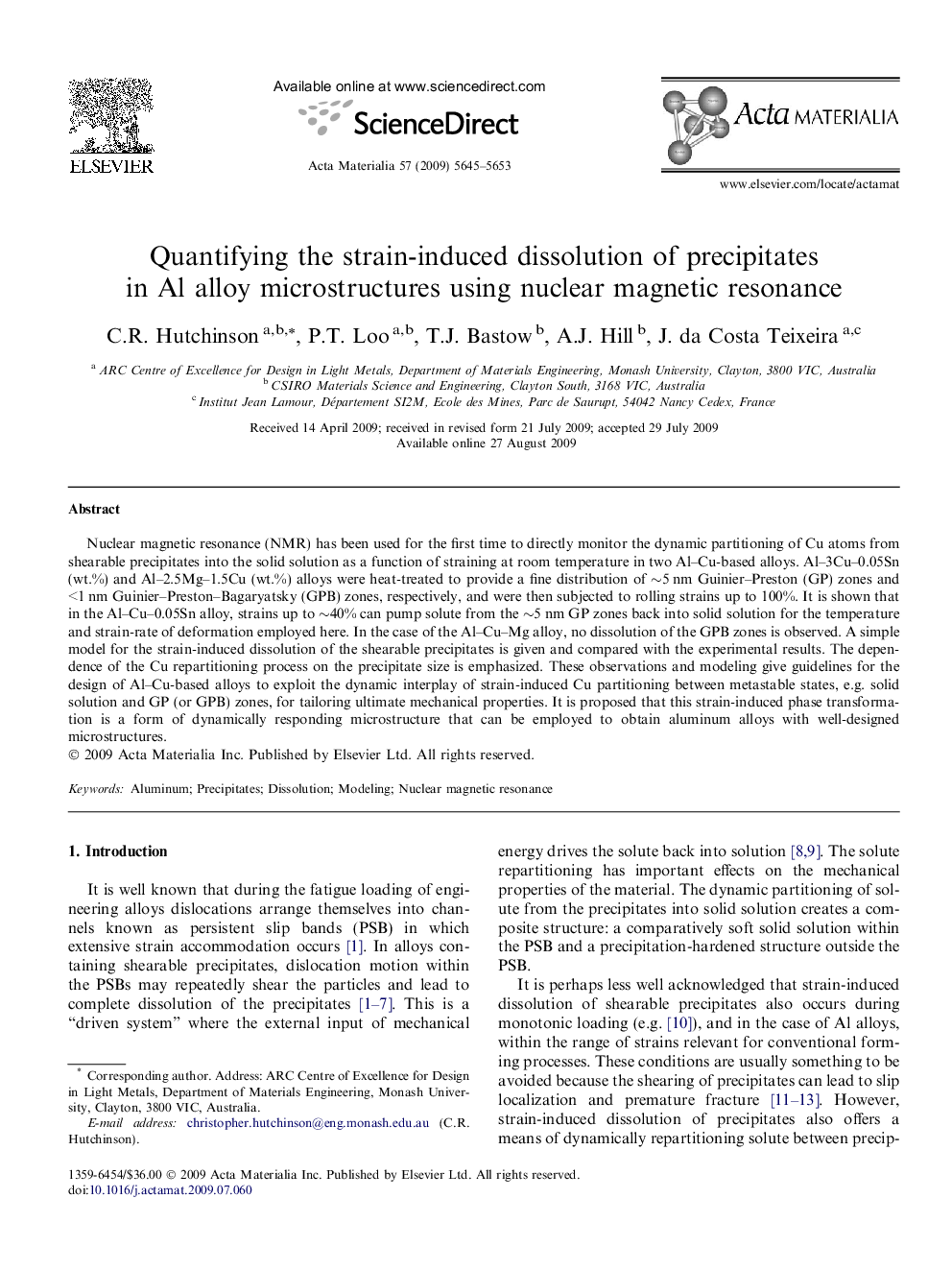| کد مقاله | کد نشریه | سال انتشار | مقاله انگلیسی | نسخه تمام متن |
|---|---|---|---|---|
| 1447909 | 988659 | 2009 | 9 صفحه PDF | دانلود رایگان |

Nuclear magnetic resonance (NMR) has been used for the first time to directly monitor the dynamic partitioning of Cu atoms from shearable precipitates into the solid solution as a function of straining at room temperature in two Al–Cu-based alloys. Al–3Cu–0.05Sn (wt.%) and Al–2.5Mg–1.5Cu (wt.%) alloys were heat-treated to provide a fine distribution of ∼5 nm Guinier–Preston (GP) zones and <1 nm Guinier–Preston–Bagaryatsky (GPB) zones, respectively, and were then subjected to rolling strains up to 100%. It is shown that in the Al–Cu–0.05Sn alloy, strains up to ∼40% can pump solute from the ∼5 nm GP zones back into solid solution for the temperature and strain-rate of deformation employed here. In the case of the Al–Cu–Mg alloy, no dissolution of the GPB zones is observed. A simple model for the strain-induced dissolution of the shearable precipitates is given and compared with the experimental results. The dependence of the Cu repartitioning process on the precipitate size is emphasized. These observations and modeling give guidelines for the design of Al–Cu-based alloys to exploit the dynamic interplay of strain-induced Cu partitioning between metastable states, e.g. solid solution and GP (or GPB) zones, for tailoring ultimate mechanical properties. It is proposed that this strain-induced phase transformation is a form of dynamically responding microstructure that can be employed to obtain aluminum alloys with well-designed microstructures.
Journal: Acta Materialia - Volume 57, Issue 19, November 2009, Pages 5645–5653